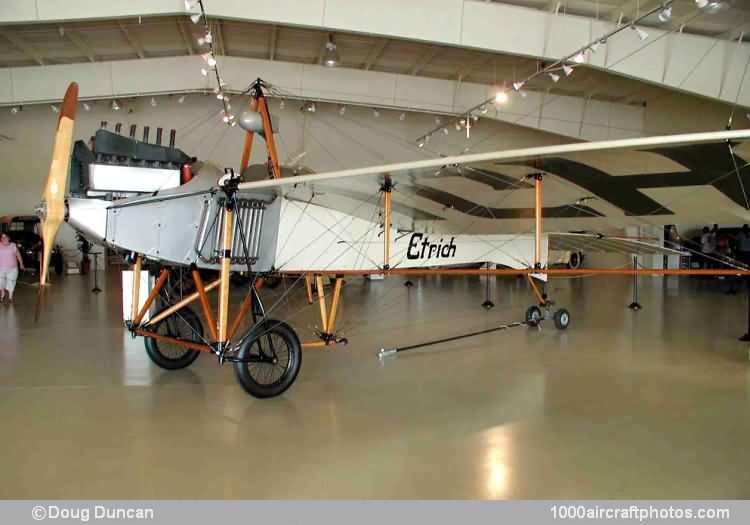03/31/2008. Remarks by Johan Visschedijk: "Born in Trautenau, Silesia (presently Czechia), Ignaz "Igo" Etrich first designed glider aircraft at his hometown. Married to an Austrian from Vienna, he formed Etrich'sche Aeroplan-Werkstätte near the fames Prater circle in Vienna's, and there he designed the first Taube (Dove) in 1909, it flew in November of that year at Wiener-Neustadt (25 mls, 40 km South of Vienna). The Taube was successful and Etrich eventually became known as the "Master of Austrian Aviation".
At Wiener-Neustadt series production was undertaken, and the Taube served with the Austrian-Hungarian Army as the A-1 and A-2. In 1910 production was also undertaken at the Etrich Flieger Werke at Liebau in Silesia (presently Lubawka, Poland), just 10 mls (16 km) to the north of Trautenau, while 15 mls (24 km) to the south, at Josefstadt (presently Josefov, Czechia), the type was constantly developed at the experimental workshop.
In 1912 Etrich formed another company, the Brandenburgische Flugzeugwerke AG, at Briest, some 40 mls (65 km) west of Berlin, Germany. This company was absorbed into the Hansa und Brandenburgische Flugzeugwerke in August 1914. The Taube was imitated in many countries and nearly a dozen companies obtained license-production rights.
The Taube earned the distinction of being the first aircraft dropping bombs on a capital city, when on August 30, 1914, Lieutenant von Hiddessen dropped five small bombs on Paris.
The pictured flying replica was built by the museum in 1990, and is representing the 1913 version of the Taube. It is fitted with a Fairchild 6-440 engine."
